How to make a bamboo shelf? Bamboo, known for its softness, durability, and rapid growth, is a versatile plant that can be employed in crafting various furniture pieces. This article provides a detailed guide on creating an efficient bookshelf using bamboo. With just a few essential tools like scissors, rope, screws, and a drill, you can follow these steps to fashion a stylish and space-saving bamboo bookshelf for your home.
Contents [hide]
1. How to make a bamboo shelf?
Bamboo, with its eco-friendly properties and versatility, makes an excellent choice for creating unique and visually appealing shelves. Follow these step-by-step instructions to embark on a rewarding journey of making your bamboo shelf diy.
Materials Needed:
- 4 bamboo poles;
- 3–4 thick wooden dowels;
- Twine or jute rope;
- 3 wooden planks of various sizes;
- Drill + hole saw cutter;
- Hand saw;
- Jigsaw;
- 6 rectangular wooden strips;
- Wood glue.
Step 1: Utilize a hand saw to cut the thick wooden dowels into 11 segments of equal length.
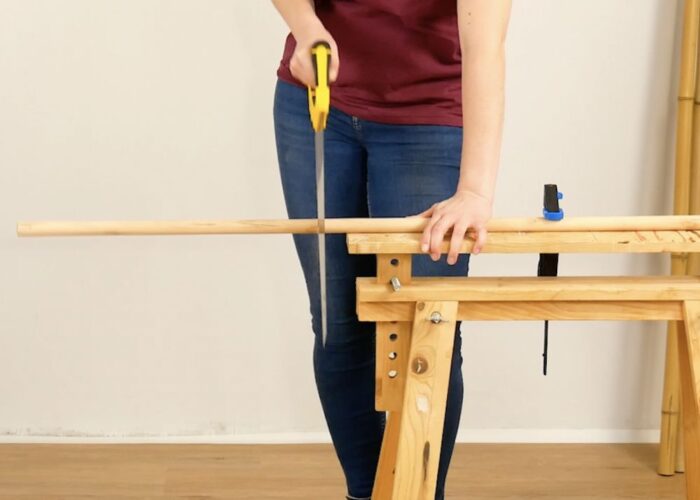
Step 2: Secure the wooden dowel segments to the bamboo poles using thick twine or jute rope, creating two ladders—one with 5 rungs and another with 6. Ensure the wooden dowels are tightly fastened to the bamboo poles, evenly spaced on both ladders.
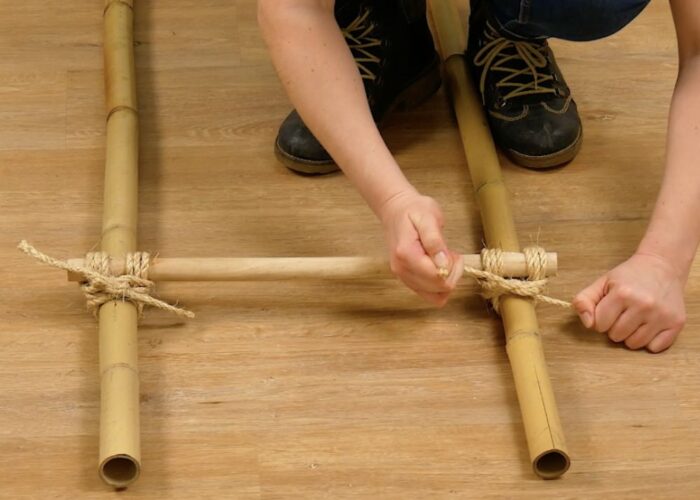
Step 3: Align both ladders and double-check to ensure that all wooden dowels are attached at the same height on each.
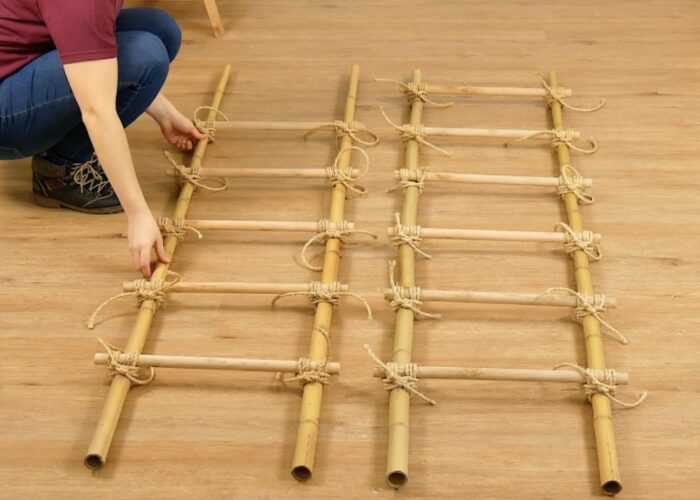
Step 4: Position both ladders upright and angle them to meet at the top. Place the ladder with 5 rungs on the top rung of the ladder with 6, securing them tightly with twine or jute rope.
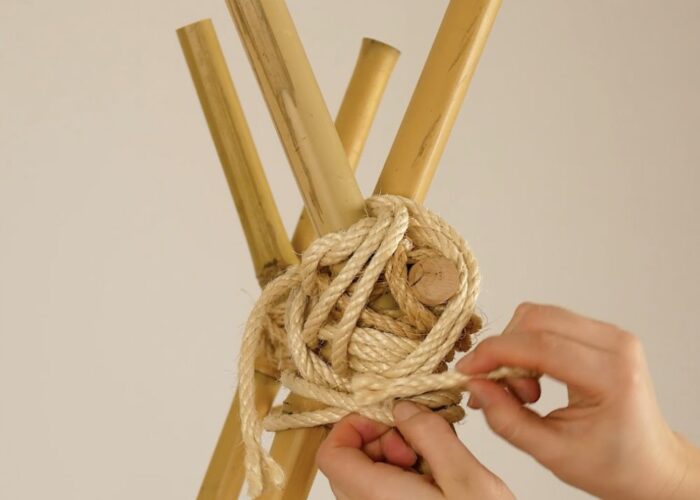
Step 5: Mark several spots on the largest wooden plank where you intend to hang your plants. Draw circles large enough to accommodate your flower pots. Use a hole saw cutter attached to a drill for the initial cut, and a jigsaw to finish it.
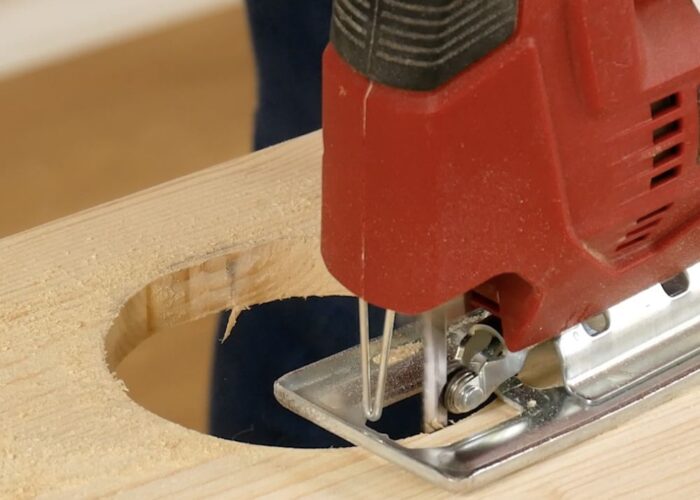
Step 6: Apply wood glue to attach one rectangular wooden strip on each side of the board. Repeat this process with both the medium-sized and small wooden planks.
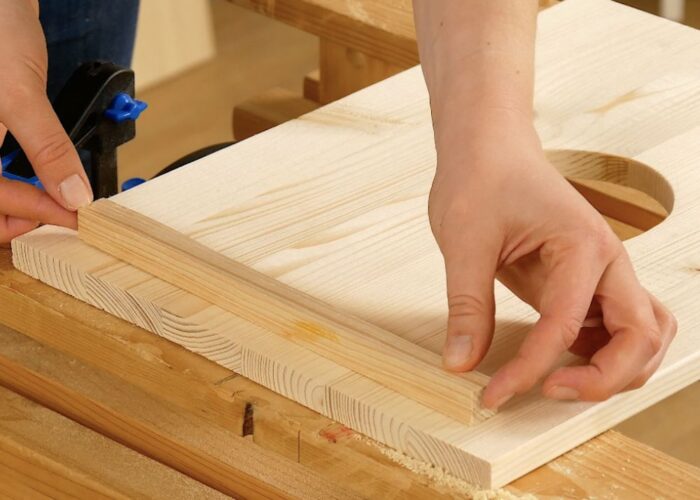
Step 7: Position the wooden boards on the ladder, ensuring they securely rest on the rungs. Once the ladder is stable, insert your flower pots into the circular cuts made in the wooden planks and place additional items such as books or gardening tools on the shelf.
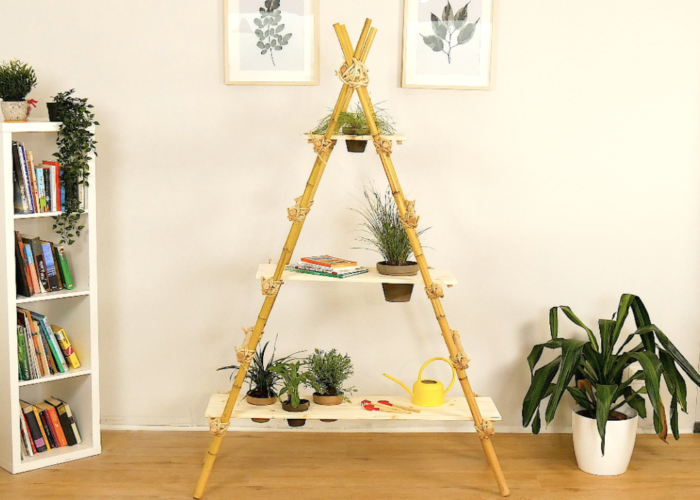
2. FAQs
2.1 Is bamboo good for shelves?
Bamboo is a durable, lightweight and eco-friendly material that can be used to make shelves. Bamboo has many advantages over other types of wood, such as its ability to resist termites, moisture and heat. Bamboo also comes in various colors and designs, suitable for different decorating styles.
However, bamboo also has some drawbacks, such as its higher cost than ordinary wood, and its need for careful maintenance to avoid warping or cracking. Moreover, bamboo can also be affected by sunlight or cleaning chemicals.
Therefore, when using bamboo to make shelves, you should choose products with good quality, properly treated and coated, and place them in dry, cool and shady places.
2.2 How much weight can a bamboo shelf hold?
The weight-bearing capacity of a bamboo shelf depends on various factors such as the quality of the bamboo, the construction design, and the overall dimensions of the shelf. Generally, bamboo shelves are known for their strength and can adequately support moderate to heavy loads.
On average, a well-constructed bamboo shelf can hold anywhere from 25 to 75 pounds (11 to 34 kilograms) per linear foot, depending on the thickness and quality of the bamboo, as well as the design of the shelving unit. It’s important to consider the intended use of the shelf and distribute weight evenly to maximize its capacity.
For specific weight limits and guidelines, it’s recommended to refer to the manufacturer’s instructions or specifications provided with the bamboo shelf. If in doubt, reinforcing the shelf with additional support brackets or consulting with the manufacturer can help ensure the safe and effective use of the bamboo shelf in your particular application.
2.3 Can a bamboo shelf get wet?
Bamboo shelves possess a degree of natural resistance to water; however, they are not entirely impervious to moisture. While bamboo can withstand occasional exposure to water, prolonged or frequent contact should be avoided to prevent potential issues such as swelling, warping, and discoloration.
To safeguard a bamboo shelf from getting wet, it is advisable to limit its exposure to moisture. Applying a waterproof sealant or finish specifically designed for bamboo can provide an additional layer of protection, acting as a barrier against moisture absorption. Proper ventilation in the storage area is also essential to prevent the accumulation of humidity.
In the event the bamboo shelf does come into contact with water, it is crucial to promptly wipe it dry using a clean, dry cloth. This helps prevent water absorption and minimizes the risk of adverse effects on the structural integrity and appearance of the shelf.
Strategic placement of the bamboo shelf away from direct water sources, such as bathroom shelf, is another practical precaution. By taking these measures, one can ensure that a bamboo shelf remains resilient and retains its aesthetic appeal over time, even in environments with occasional exposure to moisture.
If you have any further questions about How To Make A Bamboo Shelf, don’t hesitate to send thanhcongcraft an email us at info@thanhcongcraft.com or message us at WhatsApp: +84967485411. Hope to serve you soon! Best regard!


